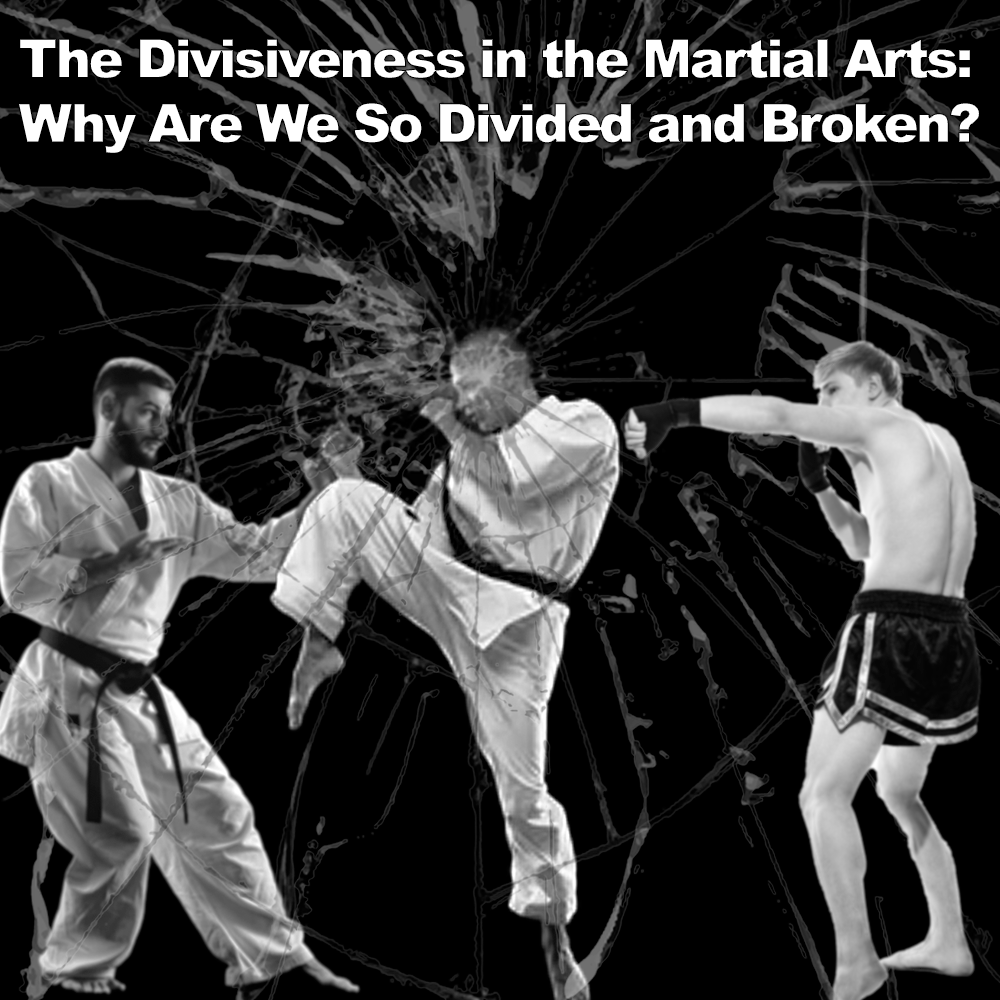
(Approx 1 minute 50 second read)
Why, in a discipline meant to promote humility, respect, and self-discipline, do we find ourselves so divided and broken?
.
Perhaps it stems from the loyalty practitioners develop toward their chosen style, instructor, or dojo. While this sense of belonging is a powerful motivator, it can easily transform into tribalism, where your style is seen as superior to others. Instead of viewing different arts as offering complementary perspectives, you start believing there’s a “best” or “ultimate” martial art (see recent article).
.
This mindset creates a divide and rather than fostering curiosity and learning, practitioners sometimes feel they must defend their style at all costs. This defensive attitude just seems to create rifts.
.
Another forceful comment this morning: ‘Karate is c**p and doesn’t work’ (again). I think he was trying to promote his ‘come and choke each other out’ style – which was straight from his own advertising. Just pointless noise.
.
A major point of contention I see in the comments is between competition-focused arts and self-defense-focused systems. Arts like Sport Karate, Taekwondo, BJJ, and MMA thrive and excel in the sporting environment. But many of their practices may not translate directly to self-defense scenarios. That’s okay, they are sports. Context again.
.
Misunderstandings also arise when practitioners don’t fully grasp their own art, let alone others. The martial arts encompass multiple dimensions – striking, grappling, joint locks, throws – but students may focus on only one aspect, leading to a fragmented understanding of combat. This narrow focus fuels stereotypes, where one art is seen as “just striking” or “just grappling”.
.
For example, karate is often viewed as purely striking, yet classical karate (referring to karate before it moved to the Japanese mainland) includes close-range techniques, joint locks, and throws. This incomplete understanding of the art’s true capabilities often leads to its dismissal.
.
It’s crucial for people to understand the history behind any martial art, as it shapes how we view and practice these systems today.
.
A big ego also plays a significant role in divisiveness. When martial artists become tied to their rank, title, or accomplishments, they resist criticism or different concepts, creating even more friction.
.
Despite these divides, one truth should unite all practitioners: each style offers unique insights and lessons.
.
Instead of focusing on what separates us, we should ask, ‘What can I learn from others?’ The moment we stop comparing and start learning, we open ourselves up to a deeper understanding, breaking down the barriers that keep us apart. Then maybe the fools creating division and pointless arguments will finally fade into the background, where they belong.
.
Written by AC.
Photo Credit: Partially Freepik
